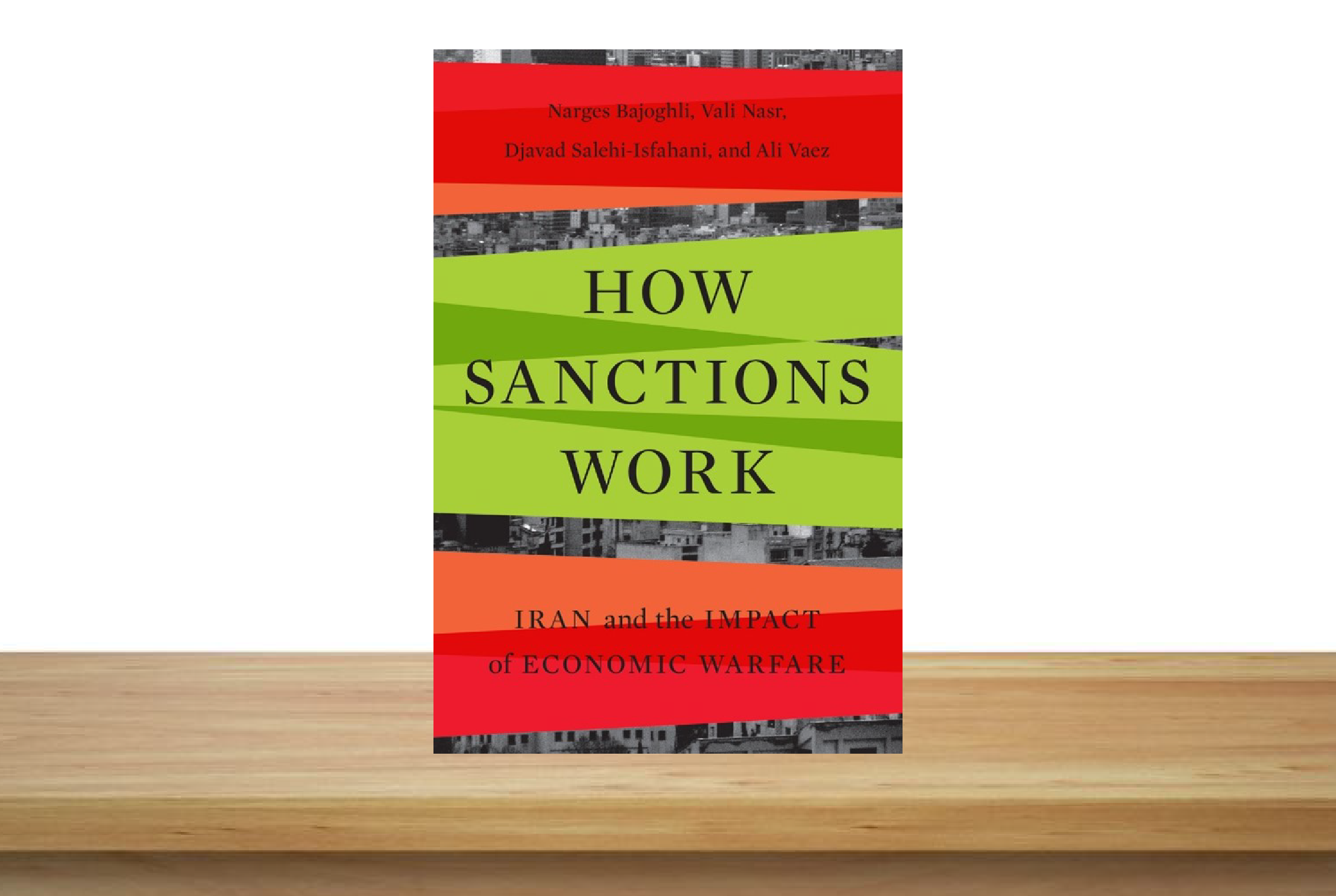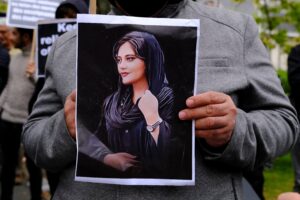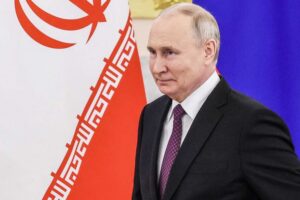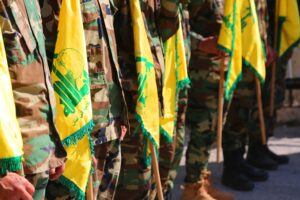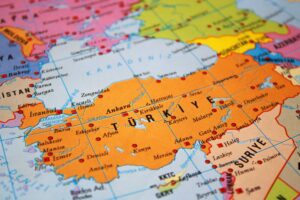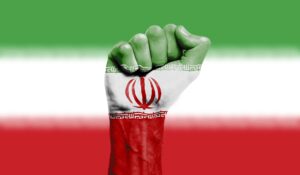On the night of the 13th to 14th of April, Iran launched an attack against Israel with around 300 missiles and drones. Tehran had decided to retaliate for the previous week’s Israeli strike against the Iranian embassy in Damascus, which led to the death of 16 people, among them two high-ranking members of the Islamic Revolutionary Guard Corps (IRGC).[i] Following Iran’s attack against Israel, the US announced new sanctions on 16 individuals and two entities associated with the Iranian drone program.[ii]
The US has seen sanctions as the preferred policy option when tensions with Iran escalate.
Although this new batch of sanctions is highly specific and might well contribute to weakening Iran’s drone program, Washington’s reaction is also representative of a broader trend. Over decades, the US has seen sanctions as the preferred policy option when tensions with Iran escalate. The use of sanctions against Iran, and their impact on the country’s internal and foreign politics, is the topic of the book “How Sanctions Work: Iran and the Impact of Economic Warfare.” The volume is the result of the collective effort of four different scholars of Iranian politics, Narges Bajoghli, Vali Nasr, Djavad Salehi-Isfahani, and Ali Vaez.
One of the central arguments of the book is that sanctions are often not the efficient policy tool they are presented to be. The attractiveness of sanctions lies in the fact that they are relatively easily implemented when compared to other options such as direct diplomacy or military conflict. The downside, however, is that once applied they “become so difficult to lift, regardless of whether they are accomplishing their goals.”[iii]
“How Sanctions Work” is part of a recently growing scholarship that engages critically with the role of sanctions. A major example of this trend is the book “The Economic Weapon: The Rise of Sanctions As a Tool of Modern War” by Nicholas Mulder, a historian at Cornell University. Mulder has argued that “both the deterrent and the compellent effect of US sanctions have fallen dramatically amid rampant overuse.”[iv]
A project by the International Crisis Group documented over 1,500 different sanctions on Iran by the time US President Donald Trump entered the last year of his presidency in January 2020.[v] In this maelstrom of sanctions, which has not substantially changed under President Joseph Biden, it is very often unclear to both US and Iranian officials which specific policy changes Iran should introduce to see some sections of the sanctions removed. As the authors note, “imposing sanctions is effective only in proportion to the prospects of relieving them in exchange for policy shifts.”[vi]
US sanctions on Iran have a long history that goes back to the first years of the Islamic Republic of Iran, established after Ayatollah Ruhollah Khomeini’s return from exile in 1979. In the beginning, though, these sanctions were meant to restrict “material transfers to and from Iran, not blocking financial transactions and third-party investment in Iran.”[vii] This would come later, during the Clinton presidency.
Even though US sanctions on Iran are more than four decades old, the authors explain that there are significant knowledge gaps in our understanding of these sanctions. Part of the problem is that the effects of sanctions have traditionally been assessed through a few economic indicators such as inflation, economic growth, or the value of the Iranian Rial. However important they might be, these values can only explain part of the story. This is why the authors defend a more holistic understanding of sanctions and their effects, one that would also study how sanctions impact the environment, civil society, or the welfare of Iranian citizens.
The fine-grained analysis of the authors opens the door to some findings that directly contradict Washington’s official rhetoric, according to which sanctions are supposed to promote democracy in Iran and rein in its regional influence. For instance, after the imposition of new sanctions on Iran during the final years of the presidency of Mahmoud Ahmadinejad, in the early 2010s, the poor and the middle class suffered a process of impoverishment. The poorest sectors of society have traditionally supported the Islamic Republic. After they lost purchasing power, they became even more dependent on state handouts. Direct state support, a trademark of Ahmadinejad’s populist politics, made them less likely to oppose the government. The hardliner Iranian President Ebrahim Raisi has carried on with these kinds of policies, including in his budget for 2023 massive amounts for cash and bread subsidies.[viii]
Sanctions lowered economic transparency, weakened the independent private sector, and strengthened business owners with ties to the regime.
Meanwhile, the middle class, which has usually been the main source of internal opposition to the repression of civil freedoms and democracy by the Islamic Republic, struggled to make ends meet with the arrival of new sanctions in the 2010s. The international economic isolation of Iran due to US direct and secondary sanctions (those that prosecute foreign companies or banks doing business with Iran) has “lowered economic transparency, weakened the independent private sector, and strengthened business owners with ties to the regime, and especially the Revolutionary Guards.”[ix]
Contrary to the perception among many US policymakers that a deterioration of life conditions within Iran would push the population to revolt against the government, societal dynamics are far more complex. Iranians, even when they protest against their government’s economic mismanagement, corruption, and foreign adventurism, are also aware that their livelihoods have been complicated by the effects of US sanctions.
Sanctions can influence Iran’s political leadership but under specific conditions.
The authors argue that US sanctions can influence Iran’s political leadership but under specific conditions. The key example here is the Obama administration’s campaign leading to the signature of the Joint Comprehensive Plan of Action (JCPOA) in 2015 to constrain Iran’s nuclear program. The US President “relied on the removal of sanctions to incentivize Iran to negotiate. It was not the threat of more sanctions that compelled Iran to talk and cut a deal. Rather, it was the prospect of earlier sanctions being lifted.”[x]
After the JCPOA was concluded, Washington dragged its feet in removing the sanctions included in the agreement and the economic benefits for Iran were smaller than initially expected.[xi] Still, the new phase in US-Iran relations could have gained momentum had it not been for the election of Donald Trump as president in 2016, his eventual withdrawal from the JCPOA in May 2018 and the re-imposition of sanctions under his “maximum pressure” campaign.
“The power of sanctions, however, could work only once”, we read in “How Sanctions Work”.[xii] After Trump exited the JCPOA, Iran realized it had dismantled part of its nuclear program and was now facing even harsher sanctions. For a while, there was still some hope that European countries would stand up and guarantee part of the sanctions relief Iran had received under the JCPOA.[xiii] In January 2019, France, Germany, and Britain established the Instrument in Support of Trade Exchanges (INSTEX) to shield European companies conducting business with Iran from the negative consequences they could face in the US market.[xiv] At the end, INSTEX carried out a single transaction and it came one year after it had been first set up.[xv] The role of European sanctions, and the EU’s inability and/or unwillingness to protect trade with Iran after Trump exited the JCPOA, should have merited more attention in “How Sanctions Work”.
Nowadays, Iran is closer to nuclear weapons capability than ever before.
In May 2019, on the first anniversary of the US exit from the JCPOA, Tehran decided to progressively exceed the limits on its nuclear program imposed by the JCPOA.[xvi] Nowadays, Iran is closer to nuclear weapons capability than ever before, although it is unclear that Tehran would take the final step and likely prefers to stay close to developing a nuclear weapon without crossing the red line. Iranian authorities recently experienced how sanctions can be quickly re-imposed even if they accept stringent controls on the country’s nuclear infrastructure. In this context, Tehran currently sees in its nuclear program a security guarantee that should not be easily traded away.[xvii]
New US sanctions on Iran provide Washington with little leverage as most economic sectors have already been affected and there is no common ground to negotiate policy changes in exchange for sanctions relief. The last years have seen an increase in the vested interests of the Revolutionary Guards in a relatively closed economy where their businesses activities are incredibly profitable.[xviii] At the same time, Iran’s economy is now more connected to Russia and China.[xix]
We live in an age where sanctions have become an instinctive reaction by US policymakers (and to a lesser extent also European leaders) when feeling challenged by rival nations. “How Sanctions Work” represents a smart call to rethink some taken-for-granted assumptions about the power and effects of what historian Nicholas Mulder would call “the economic weapon.”
[i] Rob Picheta, “Why Iran attacked Israel and what comes next,” CNN, April 15, 2024. https://edition.cnn.com/2024/04/14/middleeast/why-iran-attack-israel-intl/index.html.
[ii] Kevin Liptak, “US slaps new sanctions on Iran’s drone program as Israel considers response to weekend attack,” CNN, April 18, 2024. https://edition.cnn.com/2024/04/18/politics/us-sanctions-iran/index.html.
[iii] Bajoghli, Narges, Vali Nasr, Djavad Salehi-Isfahani, and Ali Vaez, How Sanctions Work: Iran and the Impact of Economic Warfare (Stanford: Stanford University Press, 2024), p. x.
[iv] Nicholas Mulder, “Keynes Warned the World against Using Economic Sanctions. His Alternative Is Worth Considering.” The Guardian, January 20, 2022. https://www.theguardian.com/commentisfree/2022/jan/20/keynes-warned-the-world-against-using-economic-sanctions-his-alternative-is-worth-considering.
[v] International Crisis Group, “Iran Sanctions under the Trump Administration,” January 15, 2020. https://www.crisisgroup.org/middle-east-north-africa/gulf-and-arabian-peninsula/iran/iran-sanctions-under-trump-administration.
[vi] Bajoghli, Nasr, Salehi-Isfahani, and Vaez, How Sanctions Work: Iran and the Impact of Economic Warfare
[vii] Ibid., p. 57.
[viii] Bijan Khajehpour, “Deep Data: Will Iran’s New Budget Break Even?” Amwaj.Media, February 8, 2023. https://amwaj.media/article/deep-data-will-iran-s-new-budget-break-even.
[ix] Bajoghli, Nasr, Salehi-Isfahani, and Vaez, How Sanctions Work: Iran and the Impact of Economic Warfarep. 4.
[x] Ibid., p. 115.
[xi] Geoff Dyer, “US lobby group to campaign against business investment in Iran.” Financial Times, May 1, 2016, https://www.ft.com/content/177999bc-0e5a-11e6-ad80-67655613c2d6
[xii] Bajoghli, Nasr, Salehi-Isfahani, and Vaez, How Sanctions Work: Iran and the Impact of Economic Warfare
[xiii] Chase Winter, “What is the EU-Iran payment vehicle INSTEX?”, Deutsche Welle, January 31, 2019. https://www.dw.com/en/what-is-the-eu-iran-payment-vehicle-instex/a-47306401.
[xiv] Esfandyar Batmanghelidj and Salih Shah. “Protecting Europe-Iran Trade to Prevent War: A Provisional Assessment of INSTEX.” Global Security Policy Brief. London: European Leadership Network and Bourse & Bazaar, June 2019, https://www.europeanleadershipnetwork.org/policy-brief/protecting-europe-iran-trade-to-prevent-war-a-provisional-assessment-of-instex/.
[xv] Anna Sauerbrey, “The Failure of Europe’s Feeble Muscle Flexing,” The New York Times, February 10, 2020. https://www.nytimes.com/2020/02/10/opinion/europe-iran-nuclear-deal.html.
[xvi] Patrick Wintour, “Iran announces partial withdrawal from nuclear deal”, The Guardian, May 8, 2019. https://www.theguardian.com/world/2019/may/07/iran-to-announces-partial-withdrawal-from-nuclear-deal.
[xvii] Joby Warrick, “Nuclear Deal in Tatters, Iran Edges Close to Weapons Capability,” The Washington Post, April 10, 2024, https://www.washingtonpost.com/national-security/2024/04/10/iran-nuclear-bomb-iaea-fordow/.
[xviii] Bijan Khajehpour, “What a Ministerial Impeachment Says about Corruption in Iran,” Amwaj.Media, May 24, 2023, https://amwaj.media/article/what-a-ministerial-impeachment-says-about-corruption-in-iran.[xix] Robbie Gramer and Amy Mackinnon. “Russia-Iran Ties Are Flourishing Against Backdrop of Ukraine War.” Foreign Policy, January 5, 2023. https://foreignpolicy.com/2023/01/05/iran-russia-drones-ukraine-war-military-cooperation/.


